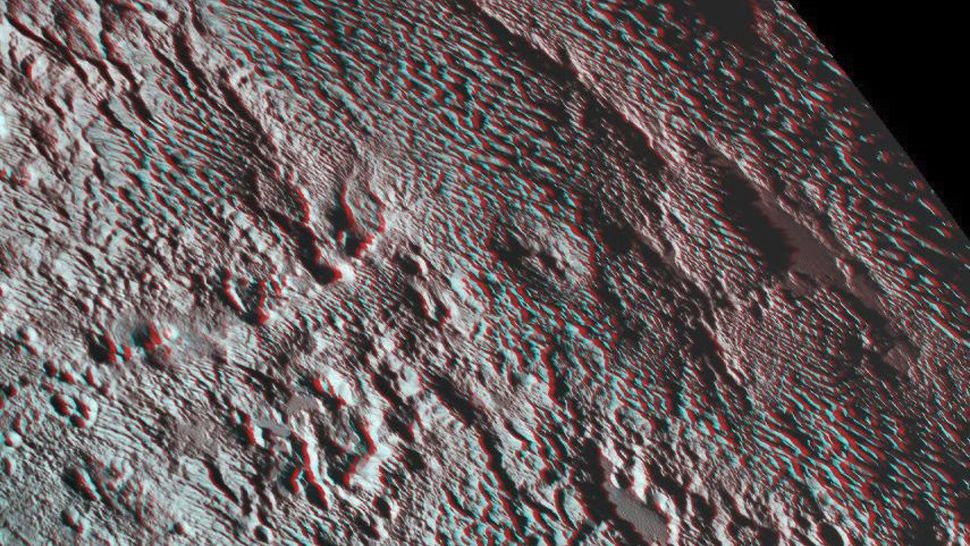Skyscraper-size spikes of methane ice may surround Pluto's equator
By Deepa Jain
published 3 hours ago
Giant, ridge-like structures of methane ice, known as "bladed terrain," may be much more abundant along Pluto's equator than previously realized, a new study suggests.

One of the strangest landforms spotted by NASA New Horizons spacecraft when it flew past Pluto last July was the bladed terrain just east of Tombaugh Regio, the informal name given to Pluto large heart-shaped surface feature.
Pluto's equator is partially covered in ridge-like ice spires known as "bladed terrain." A new study suggests that there are more of these skyscraper-size structures than previously thought. (Image credit: JPL/NASA/Johns Hopkins University Applied Physics Laboratory/Southwest Research Institute)
Skyscraper-size spires of mehtane ice may cover around 60% of Pluto's equatorial region — a larger area than scientists previously estimated, new research finds.
The study, published July 5 in the Journal of Geophysical Research: Planets, was based on data collected by NASA's New Horizons spacecraft, which captured the first close-up images of the tiny world a decade ago, on July 14, 2015.
During that flyby, the spacecraft spotted spires of methane ice, each about 1,000 feet (300 meters) tall — about as tall as the Eiffel Tower. They're separated by up to 4.4 miles (7 kilometers) in somewhat parallel rows to form a geological feature astronomers call "bladed terrain."
The spires were spotted in high-altitude regions along the dwarf planet's equator in the Tartarus Dorsa region, a mountainous stretch just east of Pluto's famous heart-shaped Tombaugh Regio.
More:
https://www.livescience.com/space/pluto/skyscraper-size-spikes-of-methane-ice-may-surround-plutos-equator
